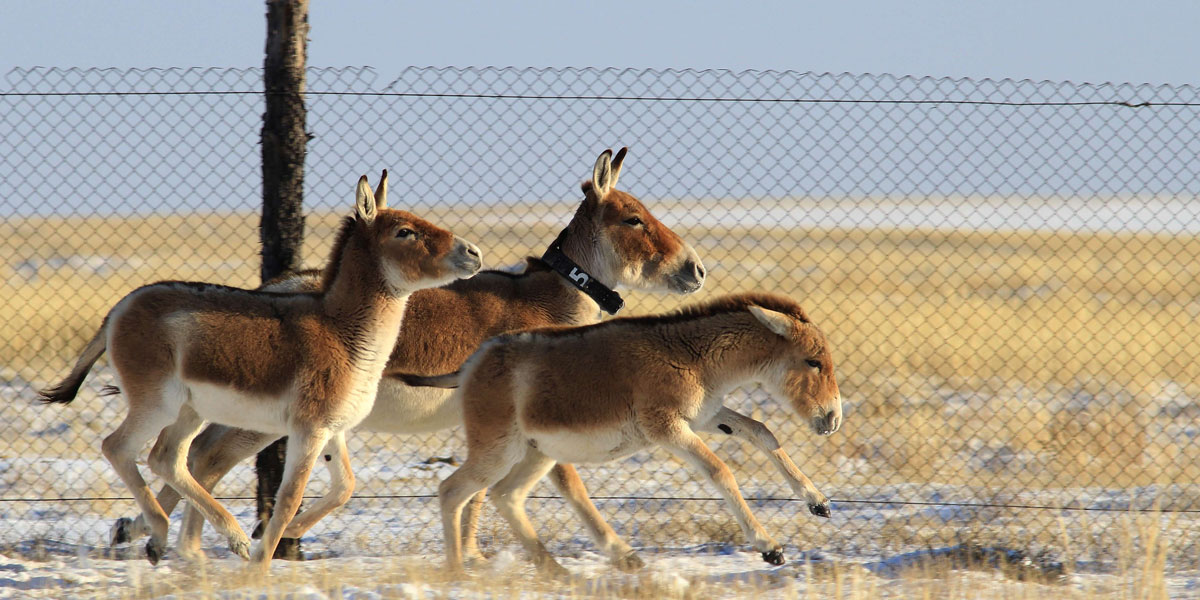
After an absence of more than 100 years, the first group of kulan set hoof on the Torgai steppe in October 2017. The nine animals are currently still in the acclimatisation enclosure. Their final release is planned in early spring 2018. Photo: A. Salemgareyev.
Temperate grasslands are considered the most altered and endangered biome on the planet. They are home to a unique assemblage of large, charismatic mammals, many of which are migratory and endangered.
In the past, large herds of migratory wild asses (Equus hemionus), also known as kulan, roamed the Eurasian Steppes. Nowadays, kulan have become confined to <3% of their former range. The situation is particularly critical for the Central Asian subspecies (E. h. kulan and E. h. onager) accordingly listed as “Endangered” on the IUCN Red List.
In Kazakhstan the species became extinct in the 1930s, but reintroduction initiatives already started in the early 1950s. Today, kulan are again found in two separate locations in south-western and south-eastern Kazakhstan. The population around Barsa Kelmes, once an island in the Aral Sea, is currently estimated at close to 500 kulan and the one in Altyn Emel National Park at >3000. However, kulan have not even reclaimed 1% of their former range in Kazakhstan and remain absent from the central steppe.
Aims of KulanSteppe
The project expects to;
- Double the range of kulan in Central Asia
- Significantly increase the global population
- Provide a catalyst for kulan conservation actions across the region.
It is also an important step towards paving the way for the restoration of the full steppe fauna of central Kazakhstan, including preparing for Przewalski's horse (Equus przewalskii) reintroduction and helping conserve the largest remaining range of saiga antelope (Saiga tatarica).
The project will bring kulan from a reintroduced population in Altyn Emel National Park in SE Kazakhstan to a release site on the Torgai steppe, strategically located in a network of protected areas, ecological corridors, and hunting areas managed by the partner organization in Kazakhstan. The infrastructure at the release site includes a field station and two acclimatization enclosures.
The bigger picture
The kulan reintroduction project is firmly embedded in the ongoing wider conservation activities of the Altyn Dala Conservation Initiative (ADCI), which is a joint initiative of the Association for the Conservation of Biodiversity in Kazakhstan (ACBK), the Committee of Forestry and Wildlife of the Ministry of Agriculture of Kazakhstan, Fauna & Flora International, Frankfurt Zoological Society, and the Royal Society for the Protection of Birds.